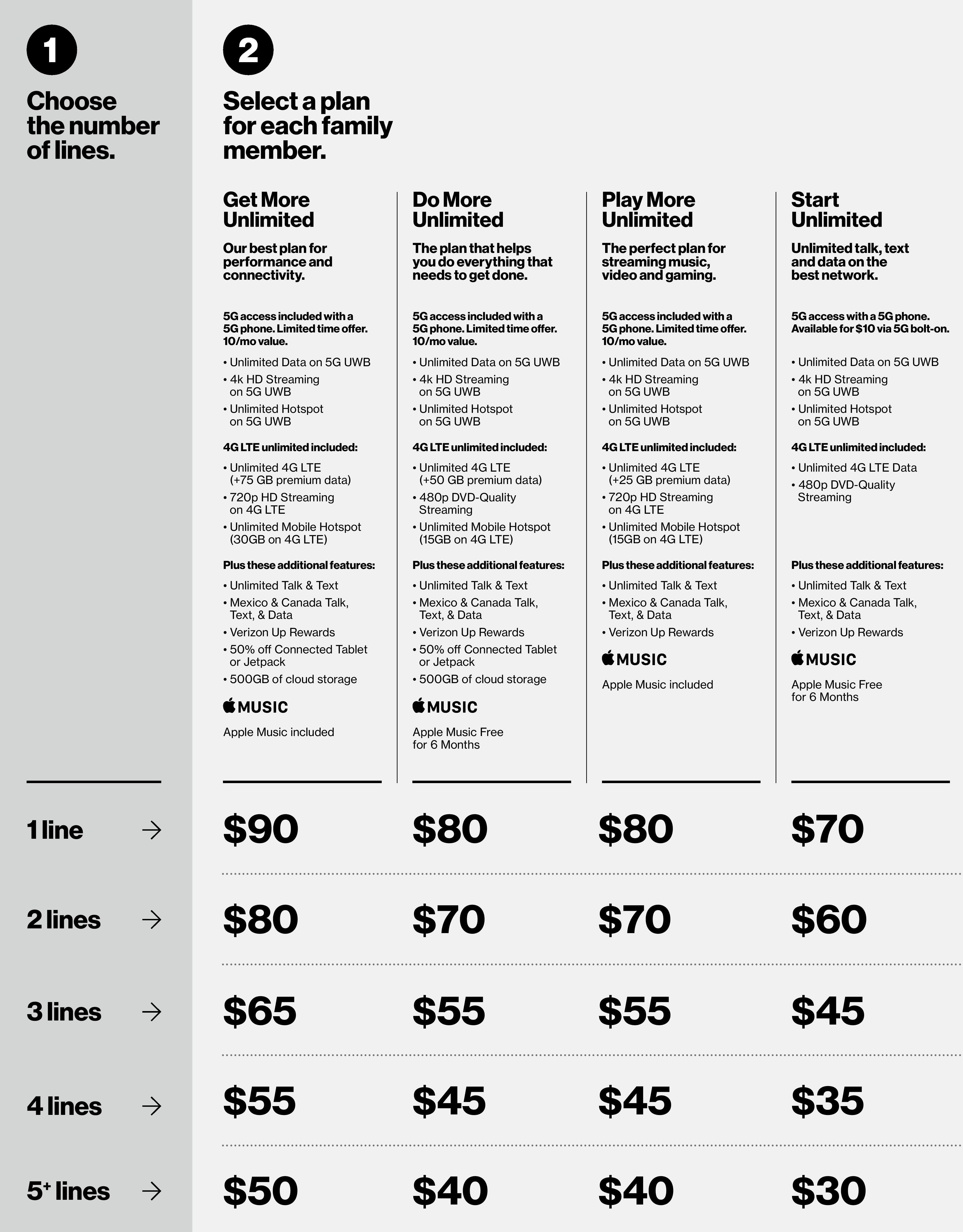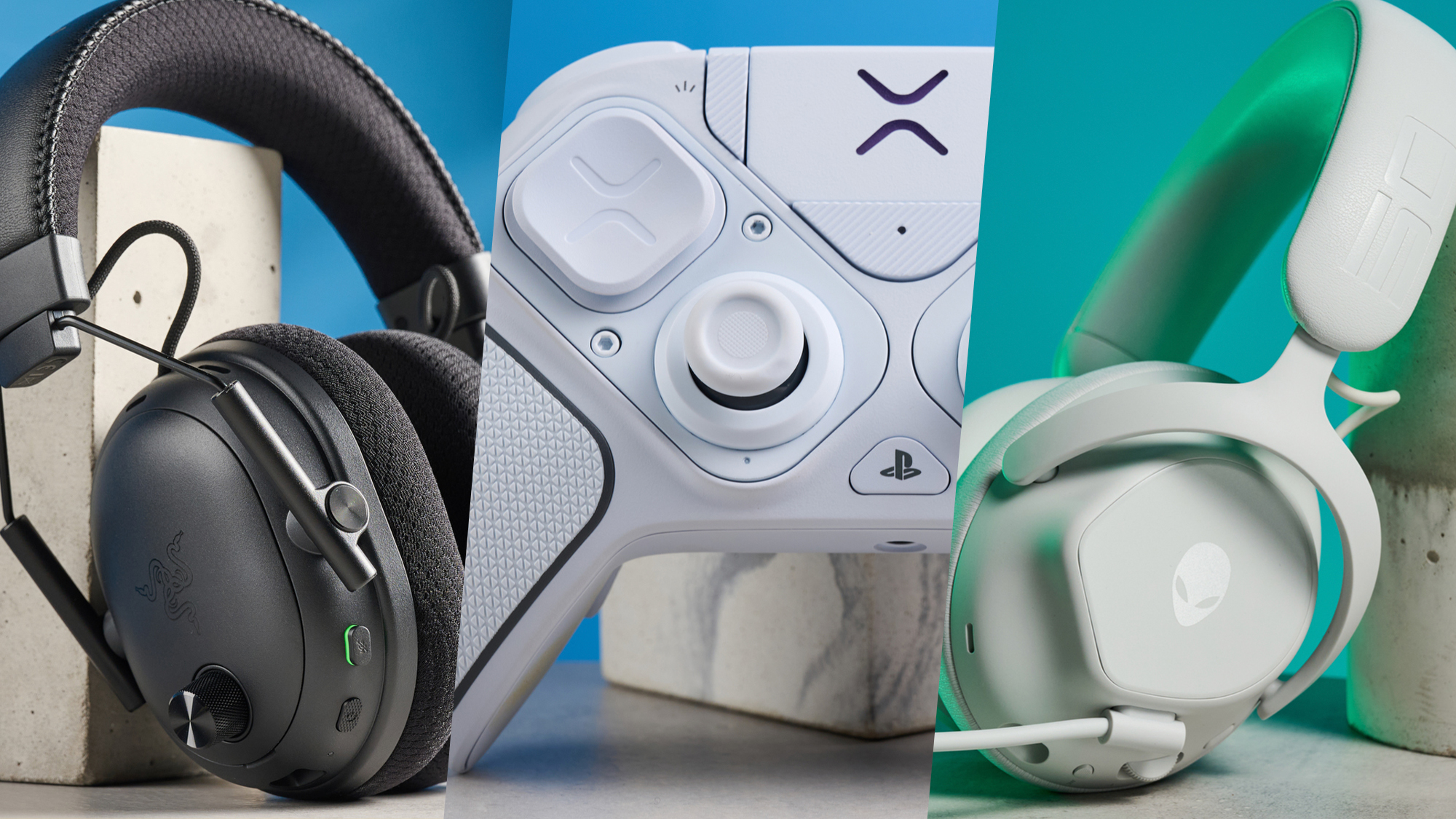Verizon's Unlimited Plans Get Cheaper Than Ever, Yet Even More Confusing
Let's cut through the fine print

Normally, a price reduction on your smartphone bill is a pretty good thing. Verizon has shuffled its unlimited data plans again, knocking $5 off each one and adding a fourth option. But with these changes comes a whole lot of confusion.
As if the Go Unlimited, Above Unlimited and Beyond Unlimited tiers weren't perplexing enough, Verizon has switched them out for four options with new yet equally interchangeable names: Start Unlimited, Play More Unlimited, Do More Unlimited and Get More Unlimited.
Start Unlimited begins at $70 per month for one line, while both Play More and Do More cost $80 (though have different advantages), and Get More is the most expensive at $90. All of these are $5 cheaper than the plans they replace, though discounts stack as you add more lines on an account, with the lowest possible cost per line being $30, $40 or $50 across those tiers for five or more devices.
Just as before, different unlimited plans can be mixed on the same account. As the cheapest, most basic offering, Start Unlimited does grant "unlimited" data, though it appears to be very much limited by speed. During times of congestion, customers who have chosen this option will see their data slowed and deprioritized behind the service of other Verizon users.
Those who spring for the $80 Play More or Do More plans, however, will receive 25GB or 50GB of “premium data” — throughput at full speed, that is not deprioritized. Once you’ve used that up, your service effectively becomes no different from what Start Unlimited customers get.
There are many more differences between the two $80 options, though. Play More users may see half the amount of premium data, though they get 720p peak video streaming and free Apple Music built-in. Do More users are stuck with 480p, standard-definition video, and will only get a 6-month trial of Apple Music. Both plans offer 15GB of LTE-speed hotspot data (after that it slows down), but Do More subscribers have 500GB of cloud storage at their disposal, too.
It’s only when you move up to Get More that you’ll receive Apple Music, all that cloud storage and 720p video streaming. Mobile hotspot LTE data increases to 30GB, and you’ll be able to use 75GB on your phone before being slowed down. You’d hope Verizon would give its highest-paying customers the ability to stream video at 1080p, though not even the Get More tier provides that freedom.
Get instant access to breaking news, the hottest reviews, great deals and helpful tips.
And then there’s the issue of Verizon's 5G network. Verizon will, at some point, begin charging $10 a month for 5G users. At the moment, Play More, Do More and Get More customers will continue to receive 5G for free, as current unlimited subscribers already do. But eventually, that charge will kick in. Start Unlimited subscribers will have to pay the 5G fee now if they own a Samsung Galaxy S10 5G or LG V50 ThinQ 5G.
While Verizon slashing $5 across the board is nice, there are so many caveats with all the carrier’s options — and the costs are still so prohibitively high for single-line accounts — that we recommend taking a look at the best cheap wireless deals from the likes of T-Mobile’s Metro subsidiary, or even Verizon’s own Visible prepaid brand, before choosing Big Red.
Visible in particular is currently offering totally unlimited data without the 5Mbps speed cap it normally imposes, all for $40. That’s a pretty phenomenal value, even if Visible’s speeds didn’t quite match those of Verizon’s when we tested the network last month. The unlimited speed promotion won’t last forever, though those who join while it is running won’t have to put up with the 5Mbps cap as long as they remain a customer.
Or, you can try to make heads and tails of Verizon's new plans. For what it's worth, the carrier has released a BuzzFeed-esque quiz to help people decide which is right for them — no, we're not kidding.
Adam Ismail is a staff writer at Jalopnik and previously worked on Tom's Guide covering smartphones, car tech and gaming. His love for all things mobile began with the original Motorola Droid; since then he’s owned a variety of Android and iOS-powered handsets, refusing to stay loyal to one platform. His work has also appeared on Digital Trends and GTPlanet. When he’s not fiddling with the latest devices, he’s at an indie pop show, recording a podcast or playing Sega Dreamcast.

